Are you curious about the question, “Do snakes need UV light?”
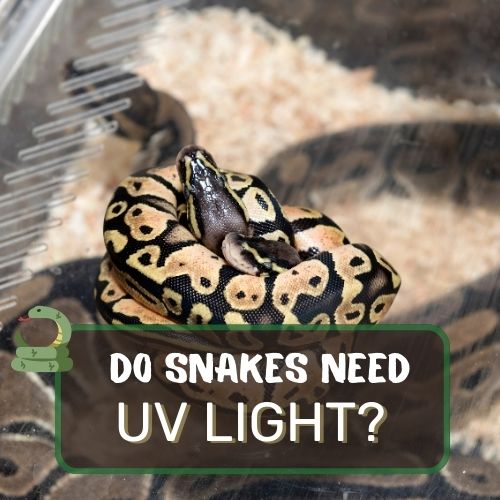
This article delves into the factors that determine the necessity of UV light for snakes, exploring the varying requirements among different snake species.
Discover the roles of UV light in snake health, including vitamin D synthesis and calcium metabolism, and how it impacts their behavior.
Addressing common myths and misconceptions, we provide accurate information on safe UV light usage in snake enclosures.
Whether you’re a snake owner or a reptile enthusiast, this article offers valuable insights into the importance of UV light for snakes’ overall well-being, guiding you to make informed decisions for their care.
Table of Contents
- 1 Do Snakes Need UV Light? Short Answer
- 2 What do the Experts Say
- 3 UV Light and Snake Vision
- 4 The Role of UV Light in Vitamin D Regulation
- 5 UV Light and Nocturnal Species
- 6 Do All Snake Species Require UV Light?
- 7 Providing UV Light in Captive Snake Environments
- 8 Common Misconceptions about UV Light and Snakes
- 9 Potential Risks and Dangers of UV Light for Snakes
- 10 FAQ
- 11 Conclusion
Do Snakes Need UV Light? Short Answer
The need for UV light varies among snake species. Some snakes, especially those with diurnal or crepuscular habits, may benefit from UV light exposure as it facilitates vitamin D synthesis and calcium metabolism. However, many snakes, particularly those that are predominantly nocturnal, have adapted to function without regular exposure to UV light.
These snakes often rely on their exceptional heat-sensing abilities and other senses to navigate in low-light conditions. Therefore, while UV light is beneficial for some snakes, it is not a universal requirement for all species.
What do the Experts Say

The Divide Among Experts
When it comes to the age-old question of whether snakes need UV light, the expert community remains divided. Some argue that UV light is essential for their overall well-being, while others believe it may not be as critical as once thought.
Arguments From Both Sides
On one hand, proponents of providing UV light to snakes argue that it mimics the natural sunlight they would receive in the wild. In their natural habitats, snakes are exposed to sunlight, which contains UV radiation.
This exposure is believed to play a vital role in their physiological processes, including calcium metabolism and vitamin D synthesis.
Supporters of UV light for snakes also highlight the potential benefits it may have on their behavior. In some reptile species, exposure to UV light has been linked to increased activity levels and improved feeding responses.
This suggests that UV light might contribute to the overall health and vitality of snakes in captivity.
On the other side of the debate, skeptics question the necessity of UV light for all snake species.
Some argue that certain snakes, especially those with nocturnal or crepuscular habits, may have adapted to function without constant exposure to UV light. In the wild, these snakes might spend much of their time in burrows or under thick foliage, where UV light is limited.
Relevant Research and Studies
Research on this topic provides some interesting insights. For instance, a study conducted on captive snakes showed that some species exhibited no significant differences in their health or behavior when provided with UV light compared to those that didn’t receive it.
This suggests that the UV light requirement may vary among different snake species.
UV Light and Snake Vision

Snake Visual Perception
To understand the significance of UV light for snakes, we must delve into the fascinating world of snake vision.
Unlike humans, snakes do not rely on color vision to perceive their surroundings. Instead, they have a remarkable ability to detect infrared radiation, which helps them sense heat and locate prey.
The Role of UV Light in Photoreception
However, this doesn’t mean that light, including UV light, is entirely irrelevant to their visual spectrum. UV light plays a role in the process of photoreception, where specialized cells in the snake’s eyes respond to different wavelengths of light.
While snakes may not see colors in the traditional sense, the presence or absence of UV light can impact their ability to detect patterns and movement.
Correlation Between UV Light and Behavior
Studies have suggested that providing UV light to snakes in captivity might enhance their visual capabilities, particularly in captive environments where artificial lighting lacks the full spectrum of natural sunlight.
This enrichment could positively influence their hunting behavior and overall mental stimulation.
Interestingly, researchers have found correlations between UV light exposure and certain behavioral responses in snakes.
For example, in some species, exposure to UV light has been linked to increased tongue-flicking behavior, which plays a crucial role in gathering chemical cues from the environment. This suggests that UV light might contribute to refining their sensory perception.
The Role of UV Light in Vitamin D Regulation
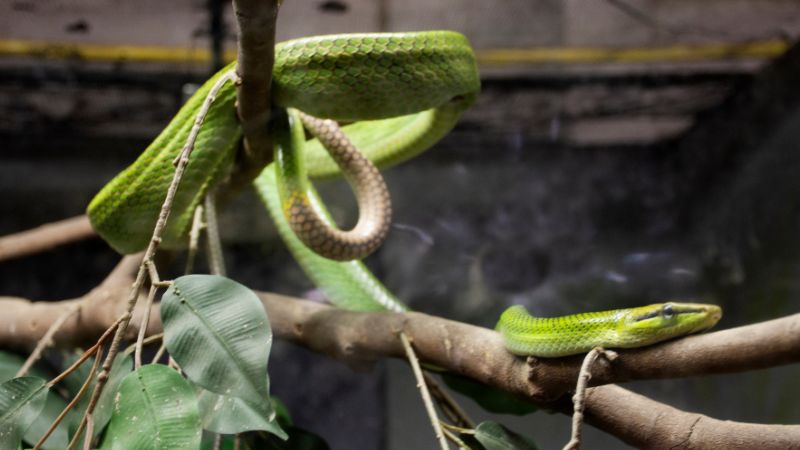
Vitamin D Synthesis in Reptiles
UV light plays a critical role in the synthesis of vitamin D in reptiles, including snakes. When exposed to UVB radiation, the skin of these cold-blooded creatures undergoes a remarkable process.
Specifically, a compound in their skin called 7-dehydrocholesterol absorbs UVB light, converting it into previtamin D3. This compound is then converted into active vitamin D3 through the heat of the snake’s body.
Importance of Vitamin D for Snakes
Vitamin D is essential for various physiological processes in snakes. One of its primary functions is to facilitate the absorption and regulation of calcium. Snakes require calcium for proper bone development and muscle function, making it a vital component of their diet.
Without sufficient vitamin D, snakes may experience calcium deficiencies, leading to health issues like metabolic bone disease, weakened bones, and impaired muscle function.
Linking UV Light Exposure to Vitamin D Levels
Studies have shown a direct correlation between UV light exposure and vitamin D levels in snakes.
When provided with access to UV light, snakes exhibit higher levels of circulating vitamin D, indicating that the process of vitamin D synthesis is indeed facilitated by UVB radiation.
UV Light and Nocturnal Species
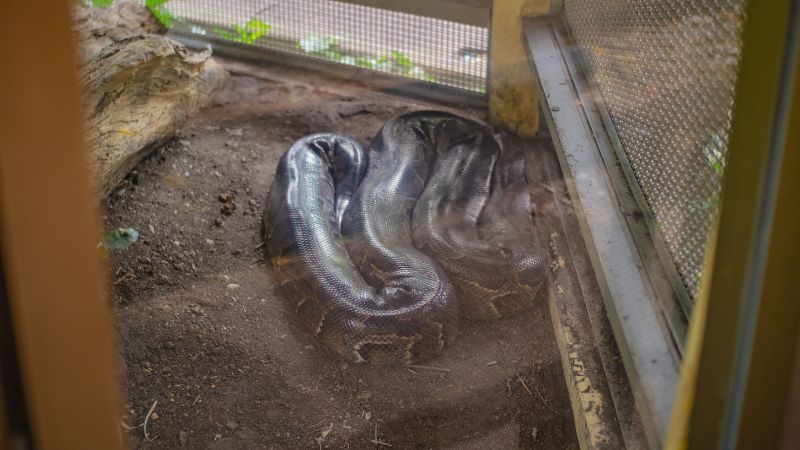
The Unique Needs of Nocturnal Snakes
Nocturnal snake species have specific needs and behaviors that set them apart from their diurnal counterparts.
As creatures of the night, they have evolved to function under low-light conditions, relying on their exceptional heat-sensing abilities to hunt and navigate their surroundings.
Influence of UV Light on Nocturnal Snakes
However, even for nocturnal snakes, UV light exposure can have significant impacts on their behavior and physiology.
In the wild, some nocturnal snake species, such as the Gaboon viper and the boa constrictor, have been observed basking under UV-rich sunlight during the early morning or late afternoon.
This behavior suggests that while they primarily operate during the cover of darkness, they still benefit from occasional exposure to UV light.
Benefits of UV Light for Nocturnal Snakes
Studies have shown that UV light can influence the circadian rhythms of nocturnal snakes.
While their activity patterns are predominantly nocturnal, exposure to UV light during certain times of the day can influence their internal clocks, affecting factors like hormone regulation and digestion.
This influence of UV light on their internal rhythms is crucial for maintaining their overall health and physiological balance.
Understanding their specific needs in relation to UV light helps us better cater to the unique requirements of these intriguing creatures, whether they reside in the wild or under our care in captivity.
Do All Snake Species Require UV Light?
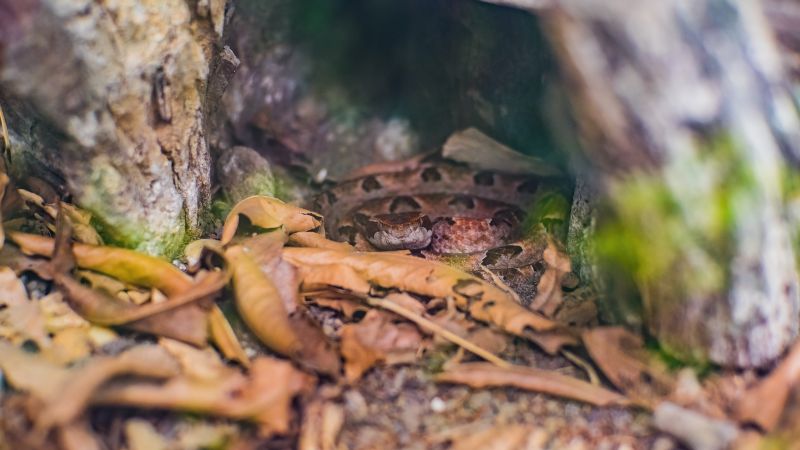
As we’ve discussed earlier, the need for UV light varies among different snake species. Some snakes are diurnal or crepuscular, meaning they are active during the day or twilight hours, and are more likely to benefit from UV light exposure.
On the other hand, many snakes are nocturnal, and their natural behavior might not require constant access to UV light.
Why Some Snake Species May Not Need UV Light
Nocturnal snake species have adapted to thrive in low-light conditions. In their native habitats, they have evolved behaviors and sensory abilities that allow them to hunt, navigate, and survive without the need for regular exposure to UV light.
They often rely on their exceptional heat-sensing capabilities and other senses to locate prey and avoid predators in the dark.
Additionally, some snakes obtain sufficient vitamin D and calcium from their diet alone.
In the wild, these snakes might consume prey that already contains the necessary nutrients, eliminating the need for extensive UV light exposure for vitamin D synthesis and calcium regulation.
Individual Species’ Natural Habitat and Behavior
When determining the necessity of UV light for a particular snake species, it is essential to consider their natural habitat and behavior.
Snakes that primarily inhabit dense forests, where sunlight is limited, might not require the same level of UV light as those found in open, sunny areas. Observing their behavior in the wild can offer valuable insights into their specific needs.
Environmental enrichment is crucial when caring for snakes in captivity. Providing an environment that closely resembles their natural habitat, including light exposure, temperature, and humidity, contributes to their overall well-being and health.
Understanding the species-specific requirements allows snake owners to make informed decisions about providing UV light in their enclosures.
Providing UV Light in Captive Snake Environments
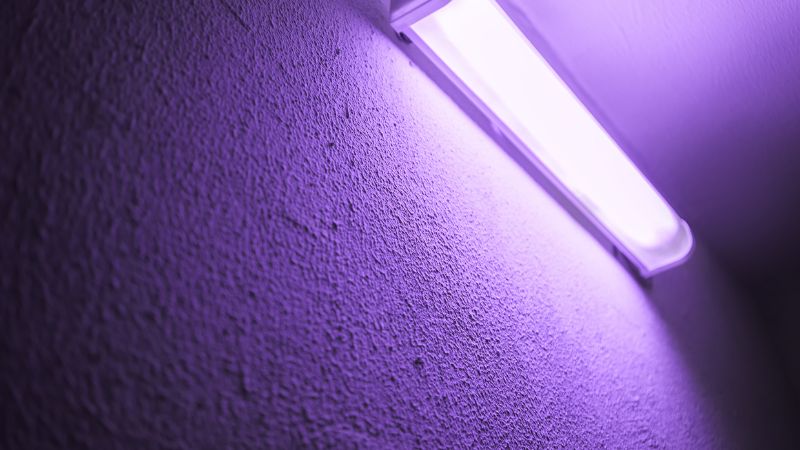
Different Options for Providing UV Light
For snake owners who decide to provide UV light in their snake enclosures, several options are available. Full-spectrum lighting, which includes UVB radiation, is the most suitable choice, as it closely mimics the natural sunlight snakes would receive in the wild.
These bulbs are specifically designed to emit the wavelengths needed for vitamin D synthesis and other physiological processes.
The Benefits of UVB Lighting
UVB lighting plays a crucial role in maintaining proper calcium metabolism and vitamin D synthesis in captive snakes.
By offering a more natural light spectrum, UVB bulbs can positively impact the snake’s overall health, behavior, and vitality. Proper exposure to UV light can help prevent metabolic bone disease and other related health issues, ensuring the snake’s well-being throughout its life.
Tips and Recommendations for Proper UV Light Setup
When incorporating UVB lighting in a snake habitat, it is essential to consider the size and type of the enclosure, as well as the specific needs of the snake species.
Placing the UVB bulb at an appropriate distance and ensuring it is replaced regularly according to the manufacturer’s guidelines is crucial to maintain its effectiveness.
Additionally, it’s essential to strike a balance between providing enough UV light for the snake’s well-being and avoiding excessive exposure, which could potentially lead to stress or other health problems.
Monitoring the snake’s behavior and adjusting the lighting setup accordingly is essential to ensure the best possible care.
Different snake species have varying needs and behaviors that determine their necessity for UV light exposure. Understanding the role of UV light in snake health and behavior helps snake owners make informed decisions about their care, ensuring they thrive in their captive environments.
Providing proper UV light in snake enclosures, along with other aspects of their natural habitat, contributes to the well-being and happiness of these fascinating creatures in captivity.
Common Misconceptions about UV Light and Snakes
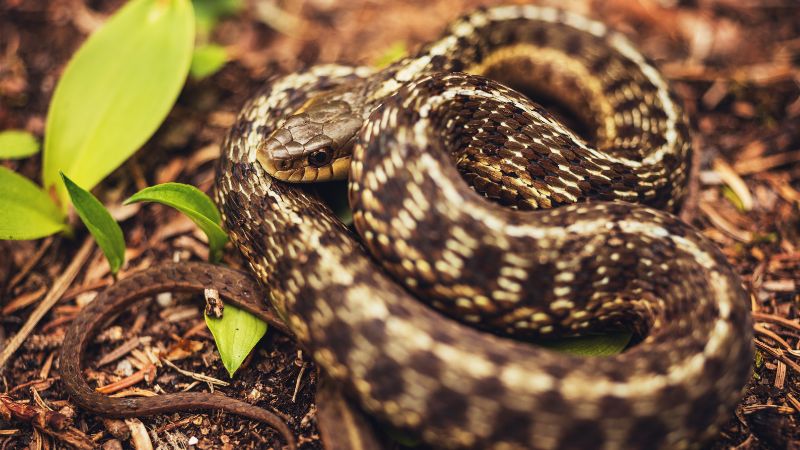
Addressing Common Myths and Misconceptions
Over the years, various myths and misconceptions have arisen surrounding UV light and its relevance to snake care. One common misconception is that all snake species require constant UV light exposure.
As we’ve discussed, this is not necessarily true, as some snakes have evolved to thrive without regular access to UV light due to their nocturnal or crepuscular habits.
Another common myth is that providing UV light to all snakes automatically improves their health and well-being.
While UV light can be beneficial for many snake species, its effects vary depending on factors like the species’ natural habitat, behavior, and diet.
Correcting Misinformation
It’s essential to correct misinformation to ensure snake owners make informed decisions about UV light usage.
Instead of following generic advice, it’s crucial to research the specific needs of the snake species in question and assess whether UV light is necessary for their well-being.
Understanding the scientific evidence and research surrounding UV light’s role in snake health is essential for dispelling myths and making accurate decisions regarding their care.
Potential Risks and Dangers of UV Light for Snakes

Potential Risks and Dangers
While UV light can be beneficial for snakes, there are potential risks associated with its improper use. Overexposure to UV light can lead to stress, especially for nocturnal snake species not accustomed to constant bright light.
Prolonged exposure to high levels of UV radiation can also cause skin and eye damage.
Additionally, excessive UV light exposure might disrupt the snake’s natural behavior and disrupt their circadian rhythms, leading to behavioral problems and health issues.
Importance of Monitoring UV Light Exposure
To mitigate potential risks, it is essential to monitor the snake’s behavior and adjust the lighting setup accordingly. Observing signs of stress or behavioral changes can indicate that the snake is experiencing discomfort due to excessive UV light exposure.
Guidelines for Safe UV Light Usage
To ensure safe UV light usage, snake owners should follow manufacturer guidelines for the UVB bulbs used in their enclosures.
Properly position the UVB bulb at an appropriate distance from the snake, ensuring it provides sufficient exposure without causing harm.
Additionally, providing hiding spots or areas of shade within the enclosure allows snakes to self-regulate their exposure to UV light, mirroring their natural behavior in the wild.
FAQ
What Kind of Lighting Do Snakes Need?
Snakes require appropriate lighting in their enclosures to simulate their natural habitat. For most snakes, a combination of a heat source and a full-spectrum light that includes UVB radiation is ideal. The heat source helps maintain proper temperature gradients, while the UVB light facilitates vitamin D synthesis and calcium metabolism.
Do Pythons Need UV Light?
The need for UV light varies among snake species, including pythons. While some python species, especially those with diurnal tendencies, may benefit from UV light exposure, others, particularly those that are predominantly nocturnal, might not require constant access to UV light. It’s essential to research the specific needs of the python species in question and provide appropriate lighting accordingly.
Why is UVB Good for Snakes?
UVB light is essential for snakes as it plays a crucial role in the synthesis of vitamin D, which is necessary for calcium absorption and regulation. Proper calcium metabolism is vital for snake health, ensuring strong bones, muscle function, and overall well-being. UVB light can also positively influence snake behavior and stimulate natural activities like feeding and exploring.
Is a Basking Light the Same as a UVB Light?
No, a basking light is not the same as a UVB light. Basking lights primarily provide heat to create a temperature gradient in the enclosure, allowing the snake to regulate its body temperature. On the other hand, a UVB light emits the specific wavelengths of light necessary for vitamin D synthesis in the snake’s skin.
How Long Do You Leave a Heat Lamp On for a Snake?
The duration of heat lamp usage depends on various factors, such as the snake species, the ambient temperature of the room, and the enclosure’s size. On average, providing a heat lamp for 12 to 14 hours a day, mimicking a day-night cycle, is recommended. However, it’s crucial to monitor the enclosure’s temperature regularly and adjust the heat lamp usage as needed to maintain the snake’s comfort.
How Do I Know If My Snake Is Warm Enough?
Monitoring the temperature within the enclosure is essential to ensure the snake is warm enough. Use a reliable thermometer to measure the temperature gradient, which should include a basking spot with a temperature range specific to the snake species. Signs of a comfortable snake include being alert, active, and feeding regularly.
Conclusion
In conclusion, the debate over whether snakes need UV light has shed light on the complexities of their care.
While the necessity of UV light varies among different snake species, it plays a critical role in vitamin D synthesis, calcium metabolism, and overall health for many snakes.
Understanding the specific needs of each snake species, their natural habitat, and behavior is crucial in determining whether to provide UV light in their enclosures.
Proper UV light usage, when applicable, contributes to their well-being, enhances their behavior, and supports their overall health.
As we continue to learn more about these fascinating creatures, further research and discussion on the topic of UV light and its impact on snake health are encouraged.
By staying informed and attentive to the individual needs of our scaly companions, we can ensure they thrive in our care and continue to captivate our curiosity for years to come.

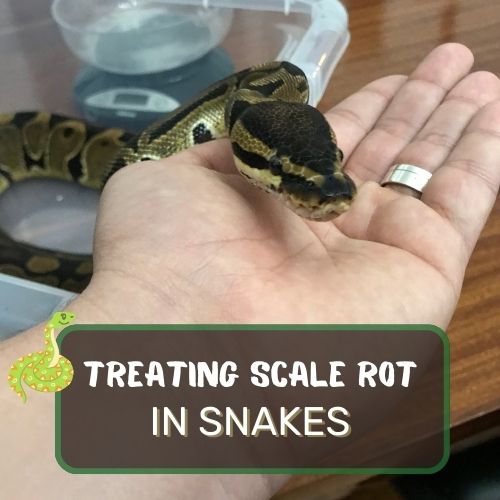
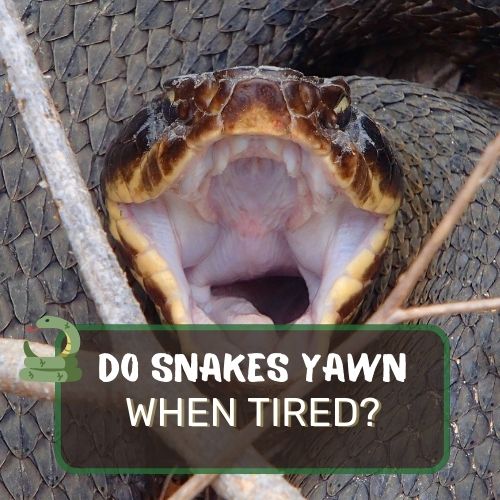

0 Comments